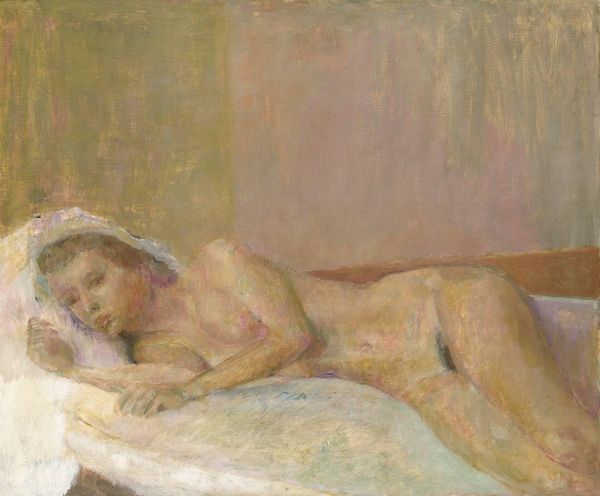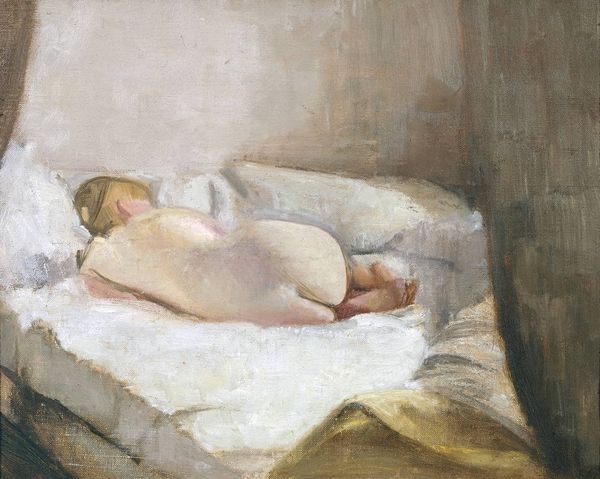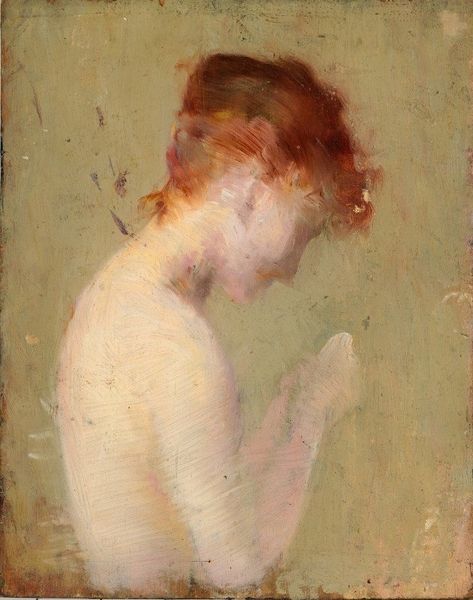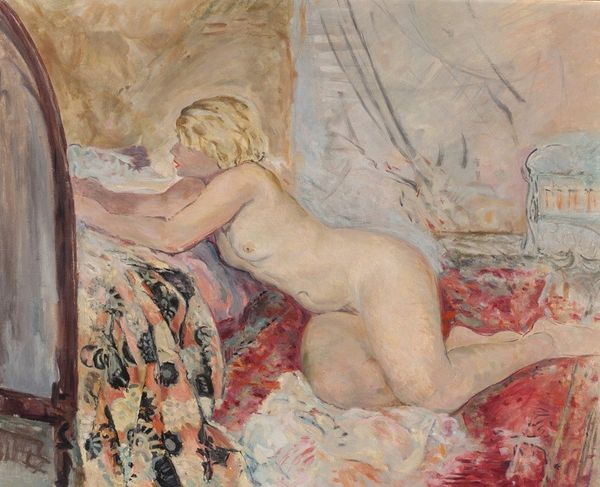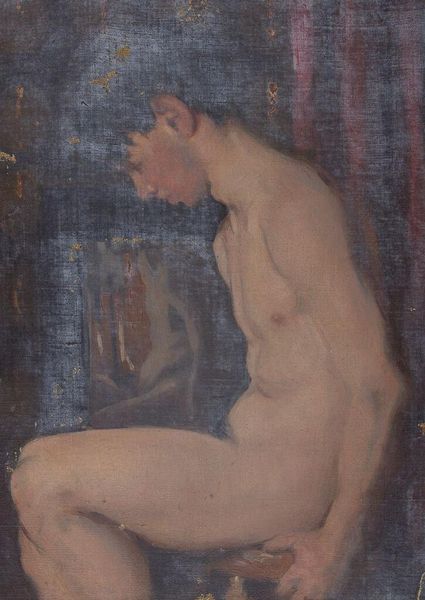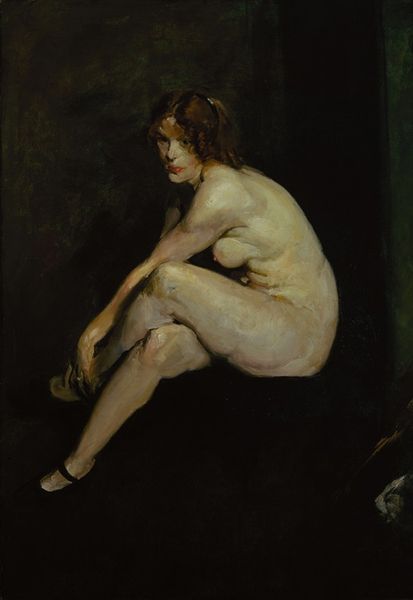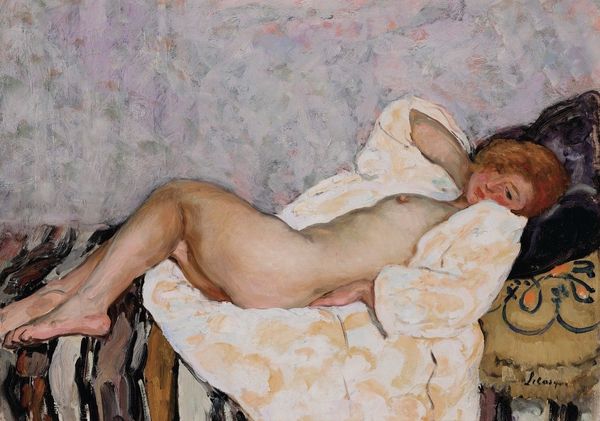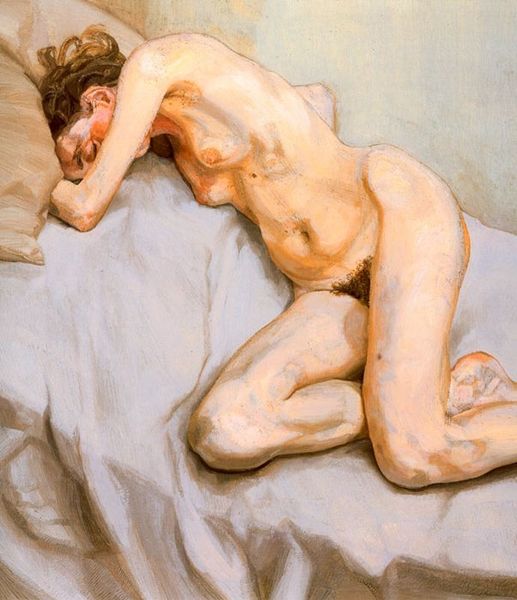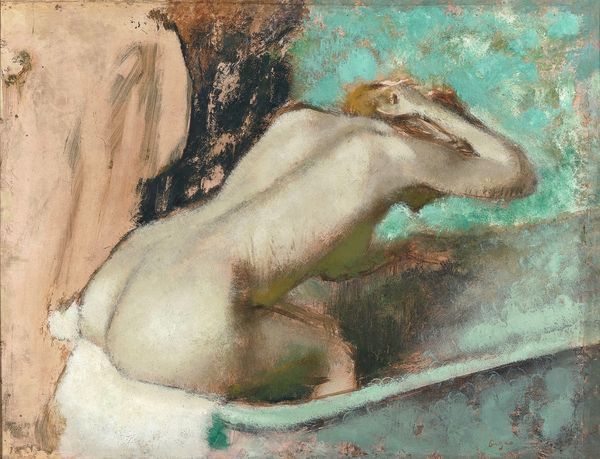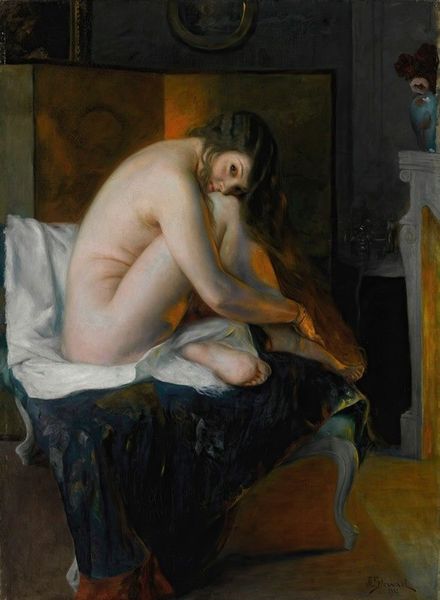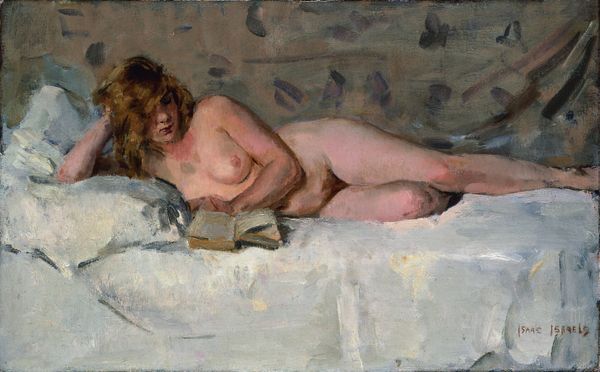
Copyright: Victor Pasmore,Fair Use
Curator: This is Victor Pasmore’s "Nude," an oil painting from 1941. It's interesting to see how Pasmore's earlier work embraced figuration before his later move into abstraction. Editor: The first thing that strikes me is how vulnerable and intimate it feels. The brushstrokes are loose, almost gestural, giving the figure a softness and immediacy. There is a clear effort to portray an image of raw vulnerability, emphasized by the sitter's guarded position. Curator: That vulnerability is interesting, particularly in light of Pasmore’s positioning within the British art scene at that time. Figures such as Lucian Freud were establishing a kind of unflinching realism, but this feels gentler. I believe he created the work when he temporarily left the army, which speaks to the social context surrounding the artist during this particular time period. Editor: Yes, there is an undeniable softness here. It isn’t a clinical study; it's emotive. The rosy cheeks, slightly parted lips, and averted gaze suggest a complex inner world, even a touch of melancholy, particularly given the potential influence of romanticism here. In the same way, however, is the image representative of society's understanding of the female body? Curator: Undoubtedly, but it would be unfair to label it as solely perpetuating the image. It speaks to his earlier artistic period and to some extent a collective nostalgia that existed in British culture at that time, which could not ignore its social influence. How much it is shaped by that, and how much it comments on it, remains the question. Editor: I appreciate that. The debate is healthy, in order to unpack the full historical narrative and impact on social perceptions and artistic license, for future representation. This kind of contextualization also gives new and alternative views that encourage a multi-faceted approach, relevant to the ongoing struggle of female empowerment within the arts. Curator: It seems in the history of the portraiture that Pasmore offers the viewer here, we each find something to appreciate but also question from the cultural position we observe it from today. Editor: Agreed, and that's why continued dialogues of historical evaluation become important with any work we may choose to perceive.
Comments
No comments
Be the first to comment and join the conversation on the ultimate creative platform.
